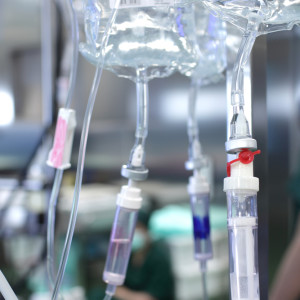
The following is an important article. It stated the following: Stage IIIA patient pairs with Non-small cell lung cancer demonstrated a higher overall survival for patients treated with chemo-radiation (16.5 months) versus no treatment (6.1 months; P < .0001). Similarly, Stage IV patient pairs (19,046) had a higher OS when treated with chemotherapy (9.3 months) versus no treatment (2.0 months; P < .0001). Simplifying this, you would live 10.4 months longer if you were diagnosed with stage 3 cancer and had chemotherapy and radiation (with no mention of side effects) vs. doing NOTHING, and you would live 7.3 months longer if you had stage 4 cancer and had chemotherapy and radiation, vs. doing nothing. This is a small benefit over doing NOTHING.
~ Dr. Rosenberg
The full article is available here.
healthyliving April 26th, 2017
Posted In: cancer care, Cancer Prevention
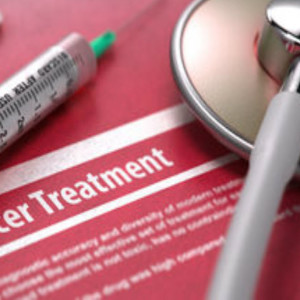
The answer to this question, as I have personally learned in my practice, is to use everything that works. Unlike the pharmaceutical method, one size does not fit all. What works for one patient’s cancer may not work for the next.
Because the mechanism of progression of cancer is extremely complex and multifaceted, one must often treat with many different modalities. In addition, not only is every cancer genetically unique, but it’s constantly changing; cancer is a dynamic disease because of constant mutations.
The idea of treating everyone with the same cancer, using the same chemotherapy, is absurd to any cancer scientist. One should not even use chemotherapy without knowing the genetics of the cancer. This explains why some patients get no benefit from chemotherapy, and some get a temporary response; it’s pot luck. If you are lucky enough to get chemotherapy that fits your cancer, you may get a temporary response.
Why don’t we do genetic testing on all cancer patients? Once again, it comes down to money. Doing genetic testing on all cancer patients would be as cost-effective as making a different dose of blood pressure medicine for every individual in the country.
Here is an abbreviated summary of the drugs and modalities I use in my treatment of advanced stage cancer.
1) Immunotherapy; to stimulate the innate immune system;
a) Coley’s toxins consists of heat-killed bacteria that stimulate the innate immune system to attack abnormal cells, including cancer. GcMAF is a macrophage activating factor that is normally inhibited by cancer cells.
b) Interleukin-2 is a substance produced by the body that stimulates production of cytotoxic T cells, which can kill cancer cells.
c) Whole body hyperthermia is a process where the patient is warmed to a temperature of up to 104 degrees Fahrenheit. Increased temperature stimulates increased innate immune function.
2) Glycolytic inhibitors; DCA, or dichloroacetate inhibits the cancer cells’ ability to utilize sugar, while promoting normal mitochondrial oxidative phosphorylation (cancer cells that use oxidative phosphorylation are more susceptible to being destroyed).
3) Matrix metalloproteinase inhibitor; cancer cells “dig in” by secreting an enzyme that breaks down tissue. Low dose doxycycline inhibits release of this enzyme.
4) Angiogenesis inhibitors; tumors can not grow without sprouting new vessels. Vessel formation is dependent on adequate amounts of copper;. If copper is depleted, tumors can not develop more blood vessels. Ammonium tetrathiomolybdate, chelates copper, thereby inhibiting angiogenesis.
5) Cancer cell cytotoxic agents; vitamin C, at high doses intravenously, when used with vitamin K3 at a ratio of 100:1, is preferentially cytotoxic to cancer cells, while leaving normal cells unharmed.
6) Mitosis inhibitors; cancer cells divide rapidly through a process called mitosis. Mitosis occurs through a process known as spindle formation. During spindle formation, spindles pull the chromosomes to opposite sides of the cell, in preparation for cell division. Noscapine, an opioid agonist binds to the spindles, inhibiting mitosis.
7) Aromatase inhibitors; research has shown that several cancers, including breast, cervical, uterine, lung, and colorectal, often fuel their growth through the production of estrogen. Aromatase inhibitors block production of estrogen.
8) IGF-1; IGF-1, or insulin-like growth factor-1 is a growth factor that often fuels cancer growth. Octreotide inhibits the production of IGF-1.
9) GnRh agonists; GnRh agonists, or gonadotropin releasing hormone agonists may inhibit cancer in 2 ways. GnRh inhibits production of the sex steroids; if the cancer is dependent on sex steroids, GnRh will slow cancer growth. In addition, many cancers have receptors for GnRh, which when stimulated, inhibit cancer growth.
10) Many other drugs and natural supplements are often used as well, depending on the specifics of the patient’s cancer.
Using all of the above modalities, I have been able to cut off many pathways of cancer growth, often converting an acutely progressive disease, into a stable, chronic disease.
What will it take to awaken the masses? What will it take to educate the medical professionals that advanced stage cancer can be treated as a chronic disease right now? I do not know the answer to this question. If I knew, I would already be doing it.
In the meantime, I continue on my journey, with the minority of physicians who care to make a difference, no matter what the consequences.
~ Dr. Rosenberg
healthyliving April 18th, 2017
Posted In: cancer care, Cancer Prevention
Tags: advanced stage cancer, cancer prevention, stage iv cancer, treatment
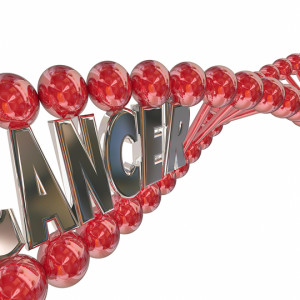
EMT transition, refers to the conversion of cells that have the epithelial phenotype (meaning they stay local and adhere to a basement membrane), to cells that have a mesenchymal phenotype (meaning they develop the ability to invade and migrate). This study showed that 300 micrograms per day of selenized yeast, for 5 weeks, downregulated the expression of genes associated with invasion, migration, and inflammation.
The Nutritional Prevention of Cancer (NPC) trial showed that 200 μg selenized yeast per day reduced the incidence of prostate cancer, and advanced prostate cancer in particular. More recent studies, however, did not consistently confirm a protective effect of selenium for prostate cancer. Results of the Selenium and Vitamin E Cancer Prevention (SELECT) trial demonstrated that supplements with 200 μg L-selenomethionine did not decrease the incidence of prostate cancer among men in the general population. Similarly, in men at high risk for prostate cancer, 200-400 μg of selenized yeast per day was not effective for prostate cancer prevention.
So how can we account for the discrepancies? In the NPC trial, specifically the participants with relatively low selenium status at baseline (selenium <123.2 μg/L) seemed to benefit from the intervention with selenized yeast. Baseline selenium levels of the participants of the SELECT trial were relatively high (median 135 μg/L). The median selenium level of participants in this trial was 81 μg/L and increased to 185 μg/L after the intervention. Based on experimental studies in dogs and a number of observational studies in humans, a U-shaped dose response curve for selenium status and several health outcomes was suggested.
So the bottom line is: every substance has a U-shaped curve: too little, not effective; too much toxic effects. Measure your patient’s selenium levels before considering supplementation.
Based on the following journal article, Chiang, Emily; Defining the Optimal Selenium Dose for Prostate Cancer Risk Reduction: Insights from the U-Shaped Relationship between Selenium Status, DNA Damage, and Apoptosis; Dose Response. 2010; 8(3): 285–300, a selenium level of 119 to 137 μg/L in plasma appears optimal.
~ Dr. Rosenberg
healthyliving April 10th, 2017
Posted In: cancer care, Cancer Prevention
Tags: prostate cancer, selenium
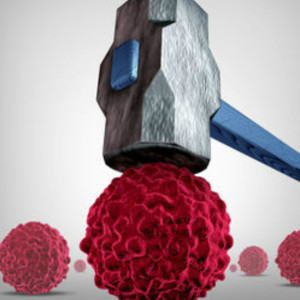
Cell Volume, Cell Membrane Potential, and its Relationship with Cancer Proliferation
Throughout the history of cancer research, in both the conventional and alternative cancer research realms, there has been a cause and effect relationship that has been largely ignored. The ability of a cell to divide, whether it be a malignant or non-malignant cell, is dependent on cell volume, as well as membrane potential. As you will learn, there is also a relationship between cell volume and membrane potential.
Cells that are cycling (dividing), progress through the following phases: G1 (Gap 1) – this is the phase where the cell is preparing for the next phase, which is the S phase, or DNA Synthesis phase. Once DNA synthesis is complete, the cell enters the G2 phase (G 2), where it prepares to enter the final phase, called the M phase, or mitosis. During mitosis, the cell divides into 2 cells. The cell volume is at its smallest at G1, and gradually increases its volume until it reaches its largest volume in the M phase. This should be intuitive, because the cell must become large enough to divide and then support two cells.
Throughout the cell cycle, the cell is constantly monitoring the volume. If the cell does not reach the desired volumes, the cell will be unable to progress to the next phase. There is a G1/S transition “checkpoint,” which commonly causes the cell to arrest at this intermediate stage, if adequate volume is not reached. When a cell is arrested due to inadequate volume, there are two possible ensuing events: either the cell will leave the cycle and enter G0, and become a dormant, non-cycling cell, or the cell will be recognized as non-viable, and undergo mitochondrial-induced programmed cell death (apoptosis).
Interestingly, cell volume correlates with cell membrane electrical potential. Cells that are rapidly dividing are in the “depolarized” state; meaning they have less negatively charged particles in the intra-cellular space relative to the extra-cellular space. Cells that are not able to divide are “hyperpolarized;” meaning they have much greater amounts of negatively charged particles in the intra-cellular space relative to the extra-cellular space. Bottom line: Rapidly dividing cells have large volume and are depolarized, while non-dividing cells have small volume and are hyperpolarized.
How Can We Mechanically Slow Cancer cell Proliferation?
Hyperpolarizing cells would stop proliferation, but it would be difficult logistically to preferentially hyperpolarize cancer cells. The data, however, clearly supports that cell swelling promotes cellular proliferation, while cell shrinkage, inhibits cellular proliferation. So… how can we shrink cancer cells?
First we need to understand how cancer cells swell.
How Can We Osmotically Shrink Cancer Cells?
If we keep albumin and sodium levels high enough in the bloodstream, the oncotic/osmotic pressures will be elevated enough to keep water and sodium from escaping. It has been demonstrated both in-vitro and in-vivo, that exposing cells (malignant and non-malignant) to a hypertonic medium (high osmotic pressure medium) stops cell division. Patients with cancer can be treated with regular infusions of albumin, and sodium as needed, to keep intra-vascular oncotic/osmotic pressures at the critical level, to prevent cancer cell proliferation.
healthyliving April 4th, 2017
Posted In: cancer care
Tags: albumin, cancer care, shrink cancer cells

Source Credit: This article was originally released by the the European Society for Medical Oncology in December, 2016.
A brain-boosting protein plays an important role in how well people respond to chemotherapy, researchers report at the ESMO Asia 2016 Congress in Singapore.
A study has found that cancer patients suffering depression have decreased amounts of brain-derived neurotophic factor (BDNF) in their blood. Low levels make people less responsive to cancer drugs and less tolerant of their side-effects.
Lead author Yufeng Wu, head of oncology, department of internal medicine, Affiliated Cancer Hospital of Zhengzhou University, Henan Cancer Hospital, Zhengzhou, China, said: “It’s crucial doctors pay more attention to the mood and emotional state of patients. “Depression can reduce the effects of chemotherapy and BDNF plays an important role in this process.”
Low mood is common among cancer patients, especially the terminally ill. BDNF is essential for healthy brain function and low levels have already been linked with mental illness. This study aimed to discover how depression influenced outcomes for people with advanced lung cancer.
Researchers recruited 186 newly diagnosed patients receiving chemotherapy. To assess their state of mind, they were asked to rate their depression levels the day before treatment began. Quality of life details, overall survival and other data were also collected. This allowed researchers to compare this information with the patients’ mood scores.
Results showed that those whose cancer had spread to other organs were the most depressed and this severely decreased their tolerance to chemotherapy. It was associated with vomiting, a reduction in white blood cells, and prolonged hospital stays. The impact of severe depression was even greater. It reduced the length of time that patients lived with the disease without it getting worse.
Researchers found that BDNF clearly boosted the number of tumour cells killed by chemotherapy. Patients with severe depression had lower levels of the protein in the blood so their bodies were not as effective at fighting cancer. This reduced their chance of surviving the disease.
“Our aim now is to prescribe drugs such as fluoxetine to depressed patients and study their sensitivity to chemotherapy,” added Wu. Commenting on the results of the research, Ravindran Kanesvaran, consultant medical oncologist and assistant professor, Duke-NUS Medical School, Singapore, said: “The link between depression and poor outcomes among these patients is significant and can be associated with the downregulation of brain derived neurotrophic factor.
“This finding can perhaps lead to new ways to treat depression in these patients which in turn may prolong their lives. Further research is needed to establish the effects of different anti-depressant drugs on BDNF levels.”
healthyliving March 29th, 2017
Posted In: cancer care, Healthy Lifestyle
Tags: cancer, chemotherapy, depression, depression and cancer
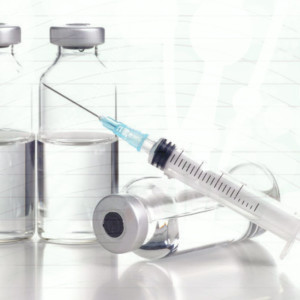
Most conventional oncologists will tell you that there is no data to support the concept that alkalizing inhibits cancer proliferation. But the truth is… the data exists.
Let’s begin by understanding how acid is produced by cancer cells. Many cancer cells prefer to utilize glucose for energy through a process called glycolysis. Glycolysis allows the cells to generate ATP (energy) quickly; in addition, avoiding the use of the mitochondria to generate energy, makes the cancer cells less susceptible to mitochondrial-induced apoptosis (programmed cell death). Cancer cells that rely on glycolysis tend to be more resistant, more aggressive, and more likely to be metastatic.
When glucose is processed through glycolysis, the end product is lactic acid. As cancer cells feed by influxing glucose intracellularly, and process the glucose to make ATP, their waste product, lactic acid, must be excreted. If they were to be unable to excrete the acid in a timely fashion, they would, of course, die from acidity. Cancer cells therefore quickly evolve by upregulating multiple mechanisms that allow them to efflux the lactic acid from the intracellular space, into the extracellular milieu.
So what happens outside the tumor, as lactic acid accumulates? Lactic acid promotes cancer aggressiveness through the following mechanisms:
1. Stimulates the release of matrix metalloproteinases (enzymes that degrade extracellular matrix), allowing cancer cells to “dig in.”
2. Stimulates release of cancer growth factors.
3. Stimulates angiogenesis (development of new blood vessels for further cancer growth).
4. Lactic acid directly inhibits T cells from attacking the cancer.
So… if we alkalize the acidic extracellular milieu, can we decrease the aggressiveness of the cancer? Is there any data to support this?
Bicarbonate Increases Tumor pH and Inhibits Spontaneous Metastases; Ian F. Robey, Brenda K. Baggett, Nathaniel D. Kirkpatrick, Denise J. Roe, Julie Dosescu, Bonnie F. Sloane, Arig Ibrahim Hashim, David L. Morse, Natarajan Raghunand, Robert A. Gatenby, and Robert J. Gillies; Cancer Res. 2009 Mar 15; 69(6): 2260–2268.
This study showed that oral NaHCO3 (baking soda) selectively increased the pH of tumors and reduced the formation of spontaneous metastases in mouse models of metastatic breast cancer. NaHCO3 therapy also reduced the rate of lymph node involvement and significantly reduced the formation of hepatic metastases.
Human Clinical Trials
1. Extended Use of Sodium Bicarbonate in Patients with Cancer (all malignancies included); Sponsor: University of Arizona. This pilot phase I trial studied the safety of long-term use of sodium bicarbonate in patients with cancer. The experimental arm used a dose of sodium bicarbonate of 0.5 grams/kg/day. This study has been completed with results not yet posted.
2. Bicarbonate for Tumor Related Pain; Sponsor: H. Lee Moffitt Cancer Center and Research Institute. This trial was to determine if sodium bicarbonate can reduce cancer-related pain, by decreasing the acidity around tumors. This Pilot Supportive Care study ended prematurely due to slow accrual and the initiating principal investigator leaving the institution.
In Conclusion
We await phase I data from the only completed human clinical trial, treating cancer with sodium bicarbonate. The animal data, as well as the science, is extremely compelling. Individuals treating cancer through alkalization should keep in mind that high doses of sodium bicarbonate seem to be necessary; drinking alkaline water likely has a minimal effect on the pH of the cancer extracellular milieu. In addition, those that attempt to self-treat with high dose sodium bicarbonate should be monitored by a physician.
healthyliving March 22nd, 2017
Posted In: cancer care
Tags: alkalizing, angiogenesis, cancer, glycolosis
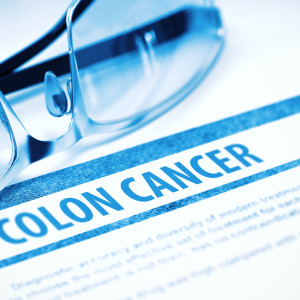
The following study from the Dana Farber Cancer Institute reveals the connection between colorectal cancer containing the bacterium Fusobacterium nucleatum. A plethora of data has revealed that your gut microbiome can affect your risk for disease, as well as an immune response to illness and disease. Animal studies using the latest immunotherapy drugs for cancer (PD-1 inhibitors and CTLA-4 inhibitors) have shown that the animal’s gut bacterial flora plays a large role in determining whether these drugs will be effective.
Bottom line: Consider studying your patients’ bacterial flora and ALWAYS ensure they regularly take a quality probiotoc.
~ Dr. Rosenberg
A new study provides some of the strongest evidence to date that microorganisms living in the large intestine can serve as a link between diet and certain types of colorectal cancer, the lead authors at Dana-Farber Cancer Institute and Massachusetts General Hospital report.
The paper, published online today by JAMA Oncology, focuses on Fusobacterium nucleatum, one of hundreds of types of bacteria that dwell in humans’ large intestines, and one that is thought to play a role in colorectal cancer. By tracking the diets of more than 137,000 people for decades and examining more than 1,000 colorectal tumor samples for F. nucleatum, the researchers determined that individuals with a “prudent” diet – rich in whole grains and fiber – had a lower risk of developing colorectal cancer containing the bacterium, but their risk for colorectal cancer that lacked the bacterium was essentially unchanged.
Prudent diets appear to protect against colorectal cancer. The new study suggests that healthy foods may achieve these benefits, in part, by altering the relative amounts of various microorganisms in the digestive tract, including F. nucleatum.
“Though our research dealt with only one type of bacteria, it points to a much broader phenomenon – that intestinal bacteria can act in concert with diet to reduce or increase the risk of certain types of colorectal cancer,” said Shuji Ogino, MD, PhD, of Dana-Farber, Harvard T.H. Chan School of Public Health, and Brigham and Women’s Hospital, the co-senior author of the study with Charles Fuchs, MD, MPH, director of the Gastrointestinal Cancer Center at Dana-Farber and Brigham and Women’s, and Andrew Chan, MD, MPH, of Massachusetts General Hospital, Brigham and Women’s, and the Broad Institute of MIT and Harvard.
“These data are among the first in humans that show a connection between long-term dietary intake and the bacteria in tumor tissue. This supports earlier studies that show some gut bacteria can directly cause the development of cancers in animals,” added Chan.
The research drew on dietary records of 137,217 participants in the Nurses’ Health Study and Health Professionals Follow-up Study – large-scale health-tracking studies – some of whom developed colon or rectal cancer over a period of decades. The researchers measured the levels of F. nucleatum in the patients’ tumor tissue and blended these data with information of diet and cancer incidence.
“Recent experiments have suggested that F. nucleatum may contribute to the development of colorectal cancer by interfering with the immune system and activating growth pathways in colon cells,” Ogino remarked. “One study showed that F. nucleatum in the stool increased markedly after participants switched from a prudent to a Western-style, low fiber diet. We theorized that the link between a prudent diet and reduced colorectal cancer risk would be more evident for tumors enriched with F. nucleatum than for those without it.”
That is precisely what the study results showed: Participants who followed a prudent diet had a sharply lower risk of developing colorectal cancer laden with F. nucleatum. But they received no extra protection against colorectal cancers that didn’t contain the bacteria.
“Our findings offer compelling evidence of the ability of diet to influence the risk of developing certain types of colorectal cancer by affecting the bacteria within the digestive tract,” Ogino commented.
“The results of this study underscore the need for additional studies that explore the complex interrelationship between what someone eats, the microorganisms in their gut, and the development of cancer,” said Chan.
Source: Dana-Farber Cancer Institute
The lead authors of the paper are Raaj Mehta, MD, of Mass General, Yin Cao, ScD, of Mass General and Harvard T.H. Chan School of Public Health, and Reiko Nishihara, PhD, of Dana-Farber, Brigham and Women’s, the Broad Institute, and Harvard T.H. Chan School of Public Health. Co-authors are Kosuke Mima, MD, PhD, Zhi Rong Qian, MD, PhD, Keisuke Kosumi, MD, PhD, Tsuyoshi Hamada, MD, PhD, Yohei Masugi, MD, PhD, Susan Bullman, PhD, and Jeffrey Meyerhardt, MD, MPH, of Dana-Farber; Wendy Garrett, MD, PhD, of Dana-Farber, the Broad Institute, and Harvard T.H. Chan School of Public Health; David Drew, PhD, of Mass General; Mingyang Song, MD, ScD, of Mass General and Harvard T.H. Chan School of Public Health; Jonathan Nowak, MD, PhD, and Xuehong Zhang, MD, ScD, of Brigham and Women’s; Aleksandar D. Kostic, PhD, of the Broad Institute; Kana Wu, MD, PhD, and Curtis Huttenhower, PhD, of Harvard T.H. Chan School of Public Health; Teresa T. Fung, ScD, RDN, of Simmons College; Walter Willett, MD, DrPH, and Edward Giovannucci, MD, ScD, of Harvard T.H. Chan School of Public Health and Brigham and Women’s.
This work was supported by U.S. National Institutes of Health (grants P01 CA87969, UM1 CA186107, P01 CA55075, UM1 CA167552, P50 CA127003, R01 CA137178, K24 DK098311, R01 CA202704, R01 CA151993, R35 CA197735, and K07 CA190673); and by grants from The Project P Fund for Colorectal Cancer Research, The Friends of Dana-Farber Cancer Institute, Bennett Family Fund, and the Entertainment Industry Foundation through National Colorectal Cancer Research Alliance.
healthyliving March 14th, 2017
Posted In: cancer care, Cancer Prevention
Tags: colon cancer, colorectal cancer, diet an colon cancer, intestinal microorganisms, nucleatum, pancreatic cancer
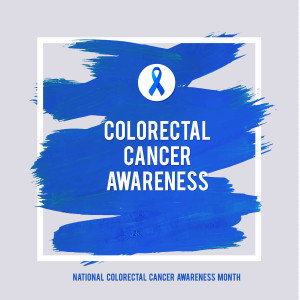
March is National Colorectal Cancer Prevention month so I thought I’d give my readers some tips about how to prevent colon cancer. More than 90% of people diagnosed with colon cancer are over the age of 50 – the age recommended for initial screening. If you’re over age 50, you’ll want to read about what’s new in colon cancer research as well as what you can do to prevent getting it.
Colon Cancer Awareness
The Centers for Disease Control (CDC) says that 140,000 people every year are diagnosed with colon cancer and more than 50,000 people die from it. Yet, this does not have to be the case. The good news is that colon cancer can be cured if found early and underscores the importance of screening.
Risk
Colon cancer affects men and women equally and your risk for getting it increases with age. It is thought associated with poor diet – low nutrient, high dietary toxin – intake. It can be hereditary as well – it tends to repeat throughout family generations. It also has a higher risk of occurrence with people who have inflammatory bowel conditions like irritable bowel syndrome, diverticulitis, or Crohn’s disease.
Symptoms
The symptoms of colon cancer are usually few, if any, but may include: change in bowel habits (going too much, not enough), persistent stomach pain, cramps, blood in stool, or unexplained weight loss and chronic fatigue. Of course, having these symptoms does not necessarily mean colon cancer; they can also accompany other issues. Yet, if you have these symptoms that continue, do see your doctor for further investigation.
Screening Tests
Health researchers recommend colon screening soon after the age of 50. This can consist of:
Having a sigmoidoscopy or colonoscopy is not painful. Yet, the preparation for them can be a little uncomfortable in that it causes you to empty your bowel frequently. Recently, some commercial preparations have been found to have unhealthy side effects. These have been replaced by milder regimens that clean the bowel sufficiently without the side effects. You may experience some skin irritation from going so often, however.
How To Prevent Colon Cancer
I always tell my patients that preventing disease is much easier than treating it. Colon cancer is usually associated with poor diets such as high animal fats, low fiber, not enough antioxidants, high alcohol and other dietary toxins – like nitrite food preservatives – intake.
Keeping the colon healthy and cancer-free has a lot to do with something called ‘transit time’. This is the amount of time it takes for digestion to take place and waste to leave your body through bowel movements. If your transit time is slow, due to low fiber, lack of adequate water intake, and you tend to be constipated often, toxins can adhere to your bowel easily.
Recent research has shown that high fiber foods like bran, brown rice, fruits and vegetables, increase transit time to get rid of waste toxins much faster. It is recommended that you eat at least 25 grams of fiber a day. One bowl of high fiber bran cereal has about 14 grams of fiber in it – eating at least 1 serving a day, in addition to other fiber-nutrient dense foods, will help lower your risk of colon cancer. According to a Loma Linda University study, people who ate brown rice (a high fiber grain) at least once a week reduced their risk of colon cancer by 40%.
Other research out of the Dana-Farber Cancer Institute has shown that diets high in starchy carbohydrates and refined sugars – i.e. cakes, pastries, cookies, other dessert foods – up the risk for colon cancer. These foods raise blood sugar and insulin levels which create inflammation throughout the entire body. Similarly, people who are obese and/or have diabetes, are at higher risk for developing colon cancer.
Vitamins A and E (both gamma and delta tocopherols) have also been found in research to protect the bowel against cancer, as well as Omega-3 fatty acids. Foods rich in these nutrients include yellow/orange vegetables and fatty fish like salmon and mackerel. Try to have several servings per week.
Colon cancer is the 2nd leading cause of death in the United States. With efforts aimed at better preventative nutrition, as well as screening, about 60% of these deaths could be avoided.
To Your Health,
Mark Rosenberg, M.D.
healthyliving March 8th, 2017
Posted In: cancer care, Cancer Prevention
Tags: colon cancer, colon cancer awareness, colon cancer prevention, colonoscopy, colorectal cancer

Two recent articles have prompted me to share my opinion about SACT (systemic anti-cancer therapy, i.e., cytotoxic chemotherapy) and the rate of deaths in cancer patients associated with this therapy. Based on years of data, “standard of care” does not work in many, if not most cases of advanced-stage cancer. The studies and cases brought forth by these articles and the studies they are based on, offer more proof that my beliefs have merit, with many of my research partners, colleagues, and scientists being in agreement.
These articles bring to light the significant rate of death in patients diagnosed with non-small cell lung cancer and patients with breast cancer, within 30 days of being treated with cytotoxic chemotherapy (SACT). One article by Yelena Sukhoterina reveals that 50% of cancer patients die within 30 days, at some hospitals.
Another article based on a British study in hospitals from 2012 to 2014, also shows a significant death rate among those diagnosed with non-small cell lung cancer and patients with breast cancer after 30 days of treatment, with higher rates noted after 30 days of first-time cytotoxic chemotherapy treatment. The patient deaths in the British study, in many cases, were attributed to “poor clinical decision making” and prompted this statement from the directors of this study:
“Patients dying within 30 days after beginning treatment with SACT are unlikely to have gained the survival or palliative benefits of the treatment, and in view of the side-effects sometimes caused by SACT, are more likely to have suffered harm.”
It is my experience that these treatments have failed to achieve a high level of consistent rates of disease-free survival in some of the most common cancers, including lung cancer and breast cancer. This is why I have long been a proponent of the concept of low dose “metronomic” chemotherapy. This method effectively kills cancer cells with lower doses of chemotherapy, while inhibiting angiogenesis (development of new blood vessels for the cancer), and stimulating an immune response (as opposed to inhibiting the immune system with maximum tolerated dose chemotherapy), which enables the patient to experience the benefits without the associated health risks of commonly used SACT.
It is my mission, with my research, testing and in-office patient care and evaluation, to alert the public at large, and help them understand that there are far less dangerous methods available now, to extend the lives of cancer patients.
With public awareness, we can all fight the battle of making the most effective treatments for patients available for all doctors and oncologists to use, without having “standard of care” issues prevent patients from getting the non-life threatening treatments they need and deserve.
To all doctors involved in the battle against cancer, I propose considering treatments that are not administered in “maximum tolerated doses.” From the data available, maximum tolerated doses are often responsible for cancer patients losing their fight, not to the cancer, but from the standard of care treatments.
The big problem associated with SACT is the evolution of resistance in cancer cells. Maximum tolerated dose chemotherapy causes accelerated Darwinian natural selection and evolution of the cancer cells, rapidly creating the most resistant and aggressive cancer, that is no longer amenable to treatment.
My approach of low dose metronomic chemotherapy is congruent with cancer scientists’ ideas and observations, that the increasing development of cancer-resistant clones can be delayed, by adopting a “minimum drug intensity” approach, rather than the maximum tolerated dose standard of care approach.
https://www.sciencedaily.com/releases/2016/02/160224164357.htm
http://www.ncbi.nlm.nih.gov/pmc/articles/PMC2669231/
healthyliving September 26th, 2016
Posted In: cancer care
Tags: cancer care, chemotherapy, cytoxic chemotherapy, SACT